John Cassidy's Blog, page 103
February 13, 2012
Obama's Budget Takes Aim at Deficit Hawks—and Mitt
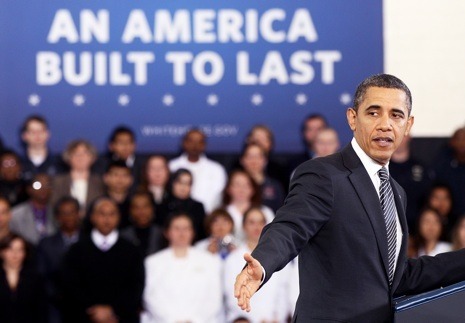
Peter Orszag and other fiscal hawks, eat your heart out: the Obama Administration's pivot to deficit reduction is well and truly done—until after the election, at least.
And Mitt Romney, take note, too. If the 2013 budget, which the White House released this morning, were to be enacted in full, which is highly unlikely, you would face a big increase in your tax bill.
From late 2009 until 2011, the Obama Administration was intent on reassuring the markets that it would bring the long-term deficit under control. It is now focussing on winning reëlection. Following the President's populist State of the Union address, which in turn built upon his landmark inequality speech in Osawatomie, Kansas, in December, his new budget seeks to preserve existing stimulus measures, such as the extension of payroll-tax cuts and unemployment benefits. It also seeks to finance long-term investments in manufacturing, alternative energy, and education by raising taxes on the rich.
In particular, the budget proposes that Americans who earn more than $250,000 a year no longer get the benefits of low tax rates on dividends and capital gains. Instead, for these taxpayers, dividends and capital gains would be subject to the ordinary income-tax rate, which for many high-income people is thirty-five per cent.
Let's take Romney as an example. In 2011, he made $20.9 million, almost all of it from dividends and capital gains on his investments, which are currently taxed at fifteen per cent. Romney's tax bill in 2011 came to $3.2 million. If the budget proposal had been in effect, almost all of Romney income would have been taxed at thirty-five per cent, and his tax bill would have been $7.3 million. That's a tax hike of about a hundred and thirty-three per cent.
In a briefing, Gene Sperling, the head of the National Economic Council, said the tax hikes on the rich would raise about $206 billion, much of which would be spent on infrastructure investments, and higher spending on education and research—part of the President's plan, outlined in the State of the Union, to create "an America built to last."
As for measures to reduce the deficit, they are rather less in evidence than in past budgets—something that won't please Orszag, who, before leaving the White House in 2010, pushed for more aggressive fiscal consolidation. Still, the Office of Management and Budget is forecasting that over the next five years the budget deficit will be cut in half: from $1.33 trillion in fiscal 2012, which ends in October, to $612 billion in fiscal 2017. As a percentage of G.D.P., which is what matters, the deficit is predicted to fall from 8.5 per cent in 2011 to three per cent in 2017.
How is this reassuring outcome to be achieved? During a campaign-style appearance at Northern Virginia Community College, Obama said he was "proposing some difficult cuts" but didn't identify many. Jeffrey Zients, the acting head of the Office of Management and Budget, pointed to cuts in Medicaid, Medicare, farm subsidies, and spending on the wars in Iraq and Afghanistan.
Zients insisted that the new budget contains five trillion dollars in deficit reduction over the next ten years, and he said that more than $3.5 trillion of this total comes from spending cuts. But these are Washington-style spending cuts, not the sort you and I would recognize: i.e., they are cuts relative to a growing baseline, not cuts in absolute dollars. The budget documents show federal spending rising from $3.8 trillion this year to $4.5 trillion in 2017, and to $5.8 trillion in 2022. And to get to those numbers, you have to believe that discretionary spending—on defense and non-defense programs—will fall sharply in inflation-adjusted terms over the next ten years.
As far as I can tell, the bulk of the deficit reduction comes from higher revenues, partly generated by higher taxes on the wealthy but mainly due to more rapid economic growth. Of the thousands of figures in the budget, what stands out most is the assumption that, over the next five years, G.D.P. will expand at an average rate of more than 3.7 per cent. Without making much of a noise about it, the White House is forecasting that the U.S. economy will finally enjoy a vigorous recovery from the housing and Wall Street busts, during which output growth will rise above the long-run trend determined by increases in population and productivity.
This sunny forecast may turn out to be correct. Since last year, I'm been more upbeat about the outlook than many professional economists, and so far the data has confirmed my view. But it's only fair to point out that it's an optimistic take on things: if G.D.P. growth of close to four per cent doesn't materialize, the deficit won't fall by nearly as much as the White House is predicting.
Finally (for now): a health warning. This budget, like its predecessors, is essentially a wish list. With the Republicans controlling the House, it has virtually no chance of being enacted as it stands: some Republicans have already declared it dead on arrival. It should be viewed not as a legislative blueprint but as a statement of the Administration's priorities and of its thinking about the economy—and, in an election year, as a very political document.
Photograph by Win McNamee/Getty.
February 10, 2012
Contraception Row Could Rebound in Obama's Favor
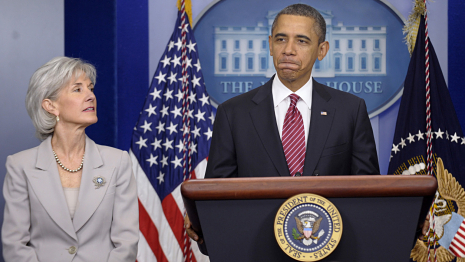
Having failed to take adequate precautions, President Obama and Kathleen Sebelius, his secretary of Health and Human Services, were looking a bit sheepish on Friday lunchtime when they walked into the White House media-briefing room and administered a morning-after pill to quiet the controversy over a government edict requiring all employers, including ones with religious affiliations (though not churches and the like), to provide women with free birth control as part of their health-care plans."No religious employers will have to pay for or provide contraceptive services, but people who work there will have access to free contraception," the President said in outlining a compromise that he said "works for everyone."
Under his new plan, in the case of religious institutions the onus on providing birth control will be shifted from employers to health insurers, who would be prohibited from charging co-payments or otherwise restricting the supply. This "shouldn't be a wedge issue," the President went on. "I certainly never saw it that way." That is clear. If the White House's political antennae had been sharper, it could have got together with the Department of Health and Human Services a month ago, before the announcement of the new rule. Quite possibly, this silly row might never have erupted. Still, I doubt the President will suffer much lasting political damage from it. Indeed, it could well rebound in his favor. Women are a much bigger voting group than Catholics. And even among ordinary Catholics, as opposed to the gilded church hierarchy, contraception just isn't a very big deal.
To be sure, the Administration goofed in its handling of this issue. If it had tabled what looks like an eminently reasonable way to balance women's rights with religious freedom, it would have passed the issue back to Roman Catholic bishops, a group whose moral and political authority has never been weaker, forcing them to oppose it. In issuing the new rules without adequate prep work, the Administration presented the bishops, led by New York Archbishop Timothy M. Dolan, with an opportunity to pose as the victims of an all-encroaching government. Then, as dawn follows night, the Republicans piled on, creating alarm in the White House political shop.
Hence today's compromise plan, which draws from a system in Hawaii, where employees at religious institutions with health-care plans that don't provide contraception can pay a small supplement to receive it on a regular basis. Under the federal plan, women wouldn't pay anything, raising the question of who will shoulder the additional cost. Obama said it wouldn't be the employers or the policy-users. That leaves it to the insurance companies, who will surely try to shift the cost onto someone.
The plan's vagueness reflects how hastily it was put together. If insurers balk at going along with it, the issue could remain in the headlines for a while longer, providing more ammo for Republican culture warriors. (Rick Santorum, apparently a keen if not very reliable student of the French Revolution, has already remarked upon this subject that President Obama is leading us to "the guillotine.")
The politicos in the White House appear to be worried about alienating Catholics in swing states like Pennsylvania, Michigan, and Ohio. I think these concerns are overblown. A number of moderate Catholic groups immediately endorsed today's compromise, including the Catholic Health Organization, whose head Sister Carol Keehan said it "has responded to the issues we identified that needed to be fixed." Doubtless, some conservative clerics will keep up their attacks. So what?
Ordinary Catholics shouldn't be lumped in with their prelates. Having been raised in a Catholic family and taught by nuns, I would suggest that while Catholics get exercised about certain social issues—abortion, for example—contraception isn't one of them. Among the churchgoers I know, the prevailing practice on those occasional and unfortunate Sunday mornings when the parish priest takes it upon himself to outline the Vatican's opinion—an opinion largely unsupported by the scriptures—that sex should be confined to procreation, and that contraception is an evil, is to sit quietly with a dutiful expression, letting the words go in one ear and out the other.
Surveys cited by the Administration show ninety-eight per cent of Catholic women have used contraception at some point. (I would bet that among men the percentage is similar—maybe even higher.) Polls also show that a majority of Catholics believe insurers should be obliged to provide contraception along with other health services. In short, ordinary Catholics are a lot closer to the White House's position than they are to the obdurate stance of Cardinal Dolan and his colleagues.
And, of course, this issue is about more than Catholics. In the 2008 Presidential election, according to exit polls, Obama got fifty-six per cent of the female vote, beating John McCain by a hefty thirteen per cent. (Among males, Obama's margin of victory was just one per cent.) Preserving and, if possible, enlarging this gender gap will be key to the President's chances this fall.
Now, there are many policies that could conceivably make women apt to vote for Obama. To suggest that women care only about a subset of issues, such as education and health care, is demeaning. However, for many women the knowledge that the President has made access to contraception a right rather than something to be haggled over with health insurers will surely be a significant mark in his favor.
Having been searching for ways to demonstrate that health-care reform is providing tangible benefits to many Americans, the White House may have happened across one that previously had gone largely unremarked upon. Under Obamacare, contraception won't be "free"—in economic terms, virtually nothing is—but it will be much more readily available, and the costs will be allocated broadly. In group plans, all of the enrolled employees and employers will shoulder the burden via their monthly premiums. (In the case of religious employers, as I said above, it is a bit unclear who will ultimately bear the cost.)
In this instance, as with all health-care services financed through insurance, we can argue about whether it makes economic sense, and whether it leads to overuse and price inflation. But there is no argument about the politics. Once people get insurance coverage for a certain condition—in this case, fertility—they tend to like it and want to keep it.
Photograph by Susan Walsh/AP Photo.
February 8, 2012
The Meaning of Rick: Santorum Could Be for Real
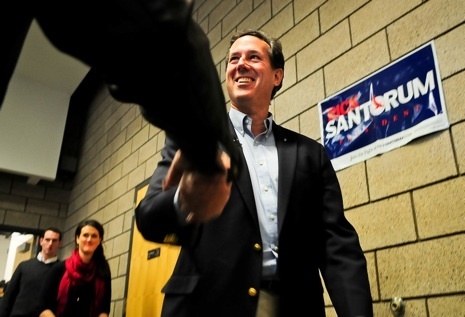
Aaghh! Santorum! Not Santorum!! Surely not Santorum!!!
From Cambridge to Brooklyn, from Georgetown to Hyde Park, from West L.A. to pretty much the entire Bay Area, you could almost hear the howls of anguish this morning. They even reached across the Pacific. "SANTORUM? Oh, America, how you disappoint me," Jeremy Tian, a writer and actor from Singapore, tweeted in response to my earlier post.
Ladies and gentlemen, I feel your pain. Ever since Santorum was elected to the U.S. Senate in 1994, I have regarded him as a particularly off-putting character. But the strength
of the feelings that Santorum evokes pretty much explains why the former Pennsylvania senator, even at this late stage, could put a serious fright into Mitt Romney, and, just conceivably, could take him down.
To educated liberals of almost any description, Santorum is an abomination. It's not just that he's a pro-life, anti-gay, anti-contraception Roman Catholic of the most retrogressive and diehard Opus Dei variety. It's his entire persona. With his seven kids, his Jaycee fashion code, his nineteen-seventies colonial MacMansion in northern Virginia, his irony bypass, he seems to delight in outraging self-styled urban sophisticates: the sort of folks who buy organic milk, watch The Daily Show, and read the New York Times (and The New Yorker, of course).
But it's precisely his in-your-face, street-corner conservatism that makes Santorum potentially a strong candidate.
As he has displayed in Colorado, Iowa, Minnesota, and Missouri, he is attractive to Republican inhabitants of small towns and rural areas, many of them alienated Evangelical Christians who take it as an article of faith that President Obama is merely the public face of a secular conspiracy intent on altering their country beyond recognition. And Santorum isn't just a religious candidate. With his hardscrabble roots and message of economic populism, he can also appeal to less devout but economically squeezed middle-income Republicans and Reagan Democrats, of whom there are many. Although his pledge to restore American manufacturing to past glories isn't very believable, it does signal to voters that he cares about bread-and-butter issues.
Ever since the political realignment of the nineteen-sixties and seventies, when the civil-rights movement prompted many southern whites and northern ethnics to switch parties, Democratic strategists have learned to fear Republican candidates, such as Ronald Reagan, who combined conservative social views with populist economics. Santorum is no Reagan. He sometimes comes across as bitter and twisted rather than sunny and optimistic. But he is plowing a fertile patch, and he has some other things going for him, too.
One of these is the current controversy over contraception and the Catholic-run hospitals and health organizations, which, wrongly or rightly, many religious people see as the Obama Administration violating the church-state divide. Commenting on Santorum's strong showing in yesterday's elections, Michele Bachmann said to Fox News's Greta Van Sustern, "It really reflects what is on people's minds . I think you are seeing a lot of people reacting against President Obama's policies." Bachmann went on: "The voters in the heartland feel very strongly on family issues, traditional values, and pro-life. Santorum is reflective of those values."
Santorum's other big advantage is that Romney, despite his big victories in Florida and Nevada, is not a very strong candidate, particularly in the middle of the country. Whereas the Mittster may be right-wing enough for Republicans in the Northeast and Florida (but not the Panhandle), in the Midwest and the South—and now in the Mountain West—the effort to market him as a conservative is running into stiff resistance. With money, organization, and a divided opposition, he remains the prohibitive favorite to win the nomination; but, as Nate Silver commented this morning, he can't afford many more nights like last night.
Much hinges on the Michigan primary, which takes place on February 28th. Often a pivotal state in the general election, Michigan is one of Romney's many "home" states, and in the polls there he has been leading handily. But this time last week he had big leads in Colorado and Minnesota, and a lot of good that did him. Defeat in Michigan would be Romney's fourth successive loss in a mid-Western state, and it would raise serious doubts about his ability to win the nomination.
For Santorum, a victory in Michigan would give him the momentum to go into Super Tuesday and knock out Newt Gingrich, who is now reduced to playing the role of spoiler. With Gingrich absent from the race, Santorum would have the chance to test his theory, which certainly received an affirmation yesterday, that in a head-to-head contest—or a three-way contest including Ron Paul—he can defeat Romney.
I can even imagine Newt dropping out of his own accord—almost. If, as many people believe, his main goal now is to put the knife into Romney, the easiest way to do it would be to call off his own campaign, which is sputtering, and endorse Santorum, with whom he remains on reasonable terms. That would leave the non-Paul conservatives united against Mitt—a scenario that would create alarm in his Boston HQ. How likely is such a thing? Not very, perhaps. But Newt is a bright fellow, and the logic of the situation will be clear to him. (In a speech in Cleveland this morning, he didn't comment on yesterday's results.)
Santorum's immediate task is to raise money and build a national organization in double-quick time without losing the energy and authenticity that powered his victories on Tuesday. The authenticity part shouldn't be hard. As he displayed in Iowa and again last night, the language and cadences of contemporary conservatism come naturally to him. His portrayal of President Obama as an out-of-touch élitist who "thinks he's smarter than you" and "thinks he knows better than you" tickles the erogenous zones of right-wing Republicans in a way that Romney, a genuine member of the élite to his bones, can't hope to mimic.
Is Santorum plausible enough, likable enough, and durable enough to become a serious Presidential contender? I have my doubts, and so do many members of the Republican establishment, Karl Rove included. In the next couple of weeks, the Romney campaign will doubtless coördinate an attack on Santorum's record, which includes lucrative spells as a corporate lobbyist and consultant, aiming at doing to him what it did to Gingrich in Florida. The manner in which Santorum handles these attacks, and how he fares in Michigan, will determine his fate. Still, one thing is already clear. He's no longer a fringe candidate.
Photograph by Ben Garvin/Getty.
February 7, 2012
Santorum's Sweep Stuns Mitt
Who saw that coming? Not I, and not anybody else—probably not even Rick Santorum.
In a stunning rebuke to Mitt Romney and the national media, Santorum took all three of Tuesday's Republican contests, defeating Romney in Colorado, Minnesota, and Missouri—all states the Mittster had been expected to win. Santorum has now been victorious in four states—more than anybody else—and yesterday's results will surely establish him as the most serious threat to Romney.
On a night when two of the three news networks—Fox News and MSNBC—didn't even bother to preëmpt their normal programming for election coverage, CNN scored a notable coup by revealing the news from Colorado. Just after one A.M. E.T., with Minnesota and Missouri already in the win column for Santorum, Wolf Blitzer said there was "more drama," and he wasn't wrong. Speaking exclusively to CNN, Ryan Call, the chairman of the G.O.P. in Colorado, announced that "Rick Santorum has exceeded expectations, and he wins the Colorado caucus."
Even before that moment, it had been a big night for Santorum—and an awful one for the frontrunner. In Missouri, Santorum defeated Romney by a whopping thirty points: 55.2 per cent to 25.3 per cent. (Ron Paul came in third with about twelve per cent.) In Minnesota, with more than four out of five of the votes counted, Santorum was leading Paul by a hefty margin, with Romney languishing in third place. (Here are the tallies: Santorum 44.9 per cent, Paul 27.2, Romney 16.9, Gingrich 10.7.)
But Colorado was the real shocker. Even as recent polls had showed Santorum gaining in Minnesota, Romney had retained a big lead in the mountain state. When the actual voting began, though, Santorum defeated him heavily in rural counties rich with evangelical voters. The pivotal result came from the Colorado Springs area, where the conservative group Focus on the Family is based. After running neck-and-neck with Romney all night, Santorum ended up defeating him by more than five points. (Santorum 40.2 per cent; Romney 34.9 per cent; Gingrich 12.8 per cent; Paul 11.8 percent.)
Speaking in St. Charles, Missouri, before the Colorado result was announced, Santorum reclaimed the mantle of the Not-Romney, which he appeared to have relinquished with poor performances in South Carolina, Florida, and Nevada, declaring: "We doubled him up here and in Minnesota." Santorum went on: "I don't stand here to be the conservative alternative to Mitt Romney. I stand here to be the conservative alternative to Barack Obama."
In a clear sign that the Romney campaign was rattled, it tried to spin the results as insignificant even before they were announced. In a memo that it released to reporters, it pointed out that this was but one day in month full of contests favorable to Romney, and that relatively few delegates were at stake.
That is true. (The Missouri vote was a beauty contest, with the delegate count to be determined in caucuses on March 17th.) But as recently as a few days ago, most pundits were predicting that Romney would sweep the three states that voted Tuesday. His performance in Minnesota was bad enough. In the 2008 Republican primary, he won the state with forty-one per cent of the vote. This time, he failed to get even halfway to that figure, raising anew the question of whether he can rally Republican conservatives in the heartland.
Santorum will use the burst of media attention he will receive to argue that Romney can't do it. In his speech last night, he hailed the results as a victory for "our party—conservatives and Tea Party people," and, citing a variety of issues, such as the environment and health care, he said "Mitt Romney has the same positions as Barack Obama," adding, "He would not be the best voice to fight for freedoms in America." A bit later, speaking to Fox News, Santorum referred to Romney as "Obama-lite."
Having been largely dismissed by the Republican establishment and the media, Santorum has now won a western state—Colorado—and three states in the midwest: Iowa, Minnesota, and Missouri. Massively outmatched in terms of money and resources in places like Florida and Nevada, he spent a lot of time in the states that voted yesterday—he left Florida early to go to Minnesota—and his old-fashioned retail campaigning was rewarded. "We had had a chance to see what a campaign looks like when one candidate isn't outspent five to one," he said during his speech.
Romney, appearing tieless at what was supposed to be a victory rally in Colorado, offered perfunctory congratulations to Santorum, engaged in a bit of dutiful but uninspired Obama-bashing, and signed off by saying, "We've got a long way to go." That is also true. With three right-wing candidates still running and dividing the conservative vote, it remains hard to see how Santorum or anybody else can defeat Romney. But Santorum's victory is another indication that the frontrunner isn't going to wrap things up anytime soon.
The race now appears to be turning into a regionally based contest, with Santorum as the heartland candidate, Gingrich as the southern candidate, and the Mittster as Mr. Everywhere Else—or so he hopes. "You know it's bad," Joe Trippi noted on Fox, "when the Romney people are putting out a memo saying McCain lost nineteen states last time."
But even the most pessimistic Romney supporter wasn't banking on losing Colorado.
Ten Questions for Not-So-Super Tuesday
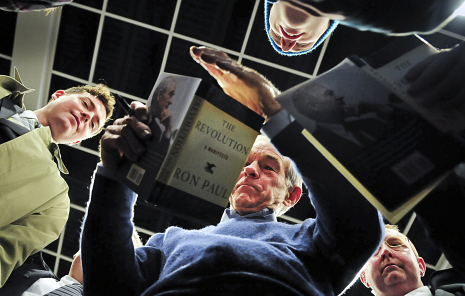
Today, for the first time in this year's Republican primary, more than one state is voting on the same day. There are caucuses in Colorado and Minnesota, plus a non-binding primary in Missouri. (The actual delegate count there will be decided in a separate caucus on March 17th.). To help you (and me) keep track of what is going on, here is a quick Q. & A. about the various contests.
1) Is today a big deal?
Actually, it is. All three of the states that vote today are of a fair size, and they will each send lots of delegates to the convention: Colorado, thirty-six; Minnesota, forty, Missouri, fifty-two. Of the states that have voted so far, only Florida was bigger, with fifty delegates. (Iowa and Nevada had twenty-eight each.) With so many delegates at stake, the votes can't help but be significant. And the fact that three states are voting simultaneously makes this a warmup for Super Tuesday, March 6th, when ten states will vote.
2) What's the state of play going in?
To land the nomination, a candidate needs 1,144 delegates. As of today, Romney is in the lead with 101; Gingrich is in second place with 32; Santorum has 17; and Paul has 9.
3) Who is expected to win in Colorado and Minnesota?
For many weeks, Romney has been the favorite in both states. But a couple of recent surveys from the same polling organization, Public Policy Polling, show Santorum running strong in Minnesota. One of them had him with a two-point lead, which is a statistical tie. In Colorado, Romney appears to still have a big advantage—fourteen points, according to the weekend poll.
4) Who's been campaigning hardest in the states that vote today?
That would be Santorum. After poor performances in South Carolina and Florida, he needs to do well today. In particular, he needs some evidence to support his theory that white working-class "Reagan Democrats" will back him rather than Mitt or Newt. Minnesota could provide it. If Santorum does poorly today, he will struggle to keep his cash-strapped campaign going.
5) Is Romney worried about Santorum?
Especially in Minnesota, his campaign does appear to be somewhat concerned. On Monday, it dispatched Tim Pawlenty, a former governor of the state, and a strong supporter of Mitt, to portray Santorum as a corrupt Washington insider. "He has been part of the big spending establishment in Congress and in the influence peddling," Pawlenty told reporters.
6) What's Newt up to?
Not very much in the states that vote today, where he has little chance of doing well. In fact, he's starting a bus tour in Ohio, which votes on March 6th. He did campaign in Colorado and Minnesota yesterday, but other than that he has spent little time or money in either place. With several other tough states for him coming up immediately ahead, including Michigan and Arizona, he's basically going all-in on Super Tuesday.
7) What about Ron Paul?
Since Colorado and Minnesota are both holding caucuses, in which having a strong local organization is important, the Texas Congressman will be looking for strong performances today. Both states have lots of colleges, which is where Paul gets most of his support. He spent Monday in Minnesota, holding rallies in St. Cloud and Minneapolis, and reiterating his anti-Washington, anti-war message.
8) What's the deal in Missouri?
I'm not quite sure and neither are many of the state's inhabitants. A local law says that the primary has to be February 7th, but the national Republican Party wanted the vote put back to March. When the Missouri State Senate deadlocked on changing the law, the Republicans decided to hold a primary and a caucus more than a month apart.
9) So does today's vote in the "Show-Me" state matter?
That depends whom you ask. Newt doesn't think so. He didn't bother putting his name on the ballot. Santorum disagrees. He's been campaigning heavily in Missouri, perhaps on the theory that a strong performance today will put him in a good position to win in March. As of yesterday, he was scheduled to be in Missouri tonight, and to give his television speech from there.
10) Is it going to be another late night?
Looks like it is. The caucuses don't start in Colorado and Minnesota until 7 P.M. local time. Allowing a couple of hours for the voting and another couple for the tallying, there is unlikely to be a definitive result in Colorado until 2 A.M. E.T. Minnesota might wrap up a bit earlier, but a tight contest between Romney and Santorum could delay things there as well.
Photograph by Ben Garvin/The New York Times.
February 6, 2012
The Jobs Report and the "Missing 1.2 Million"
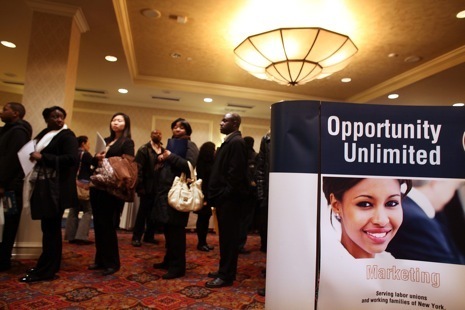
My post about Friday's jobs figures got folks riled up: some of you think I was shilling for Obama. That comes with the territory. I happen to be working on a longer piece about where I think Obama went wrong. Doubtless when that piece comes out, the president's supporters will be up in arms.
But I would like to respond to something many commentators, on this site and others, have picked up upon: a suggestion that the Labor Department's Bureau of Labor Statistics (B.L.S.) cooked the unemployment rate by removing 1.2 million Americans from the labor force. Some critics claim that these people should have been counted, and the unemployment rate should be considerably higher than 8.3 per cent.
Since the monthly jobs report is a bit complicated, let's begin with how it's put together. The payroll figures and the unemployment rate come from two different government surveys: one of businesses, the other of households. The unemployment rate comes from the household survey, which the Census Bureau carries out for the B.L.S., asking some sixty thousand households about their employment status during the previous month.
The unemployment rate is the percentage of the labor force that is out of work. According to the B.L.S., a person is in the labor force if he/she is working or actively looking for work. This excludes so-called "discouraged workers"—people who say they want a job but have given up actively looking because they believe that none are available. In January, there were 1.1 million of these folks, a figure that is little changed from a year earlier. (People serving in the military are also excluded from the labor force, which seems a bit odd, but that's how it's always been done.)
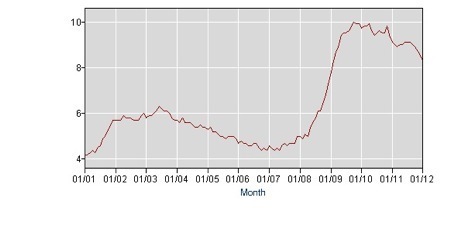
Bureau of Labor Statistics unemployment rate since 2001.
Now, let's do a bit of arithmetic. In December, 2011, there were 153,887,000 people in the labor force, out of a total population of people sixteen and older of 240,584,000. If you divide the first figure by the second, you get the labor force "participation rate," which was 64 per cent. In December, according to the household survey, 13,097,000 people were out of work. Dividing that figure by the labor force yields an unemployment rate of 8.5 per cent.
Now, let's look at January, when the unemployment rate fell by two tenths of a per cent—or did it? Yes, it did. In January, the labor force was 154,395,000, and 12,758,000 people were jobless. A bit of long division produces an unemployment rate of 8.3 per cent.
The complicating factor is that at the start of every year, the B.L.S. updates its population estimates to reflect new information from the Census Bureau. This year, relying on findings from the 2010 Census, the B.L.S. raised its estimate of the sixteen-and-over population by 1,510,000, to 242,269,000.
This is where things get tricky. If the B.L.S. had assumed that all these newly counted people were in the labor force and working, the labor force would have swelled by 1.51 million, to about 155.9 million, and the January unemployment rate would have been lower: 8.2 per cent instead of 8.3 per cent. Similarly, if the B.L.S. had assumed that all 1.51 million of these people were in the labor force but out of work, the unemployment rate would have been higher—quite a bit higher, actually: 9.2 per cent.
What the B.L.S. actually did assert was that, of these 1.51 million people, just 258,000 were in the labor force: 216,000 were working and 42,000 were unemployed. Why did the B.L.S. do this? And what about the other 1,252,000 people—were they simply expunged from the work force for political reasons? No, they weren't. I have seen no evidence to suggest that the statisticians in the B.L.S., or in any other government department, are politically motivated. In my experience, they are highly trained public servants who value their independence.
The B.L.S. explained that it adjusted the figures "because the population increase was primarily among persons 55 and older and, to a lesser degree, persons 16 to 24 years of age. Both these age groups have a lower rate of labor force participation that the general population." The reason for that is no mystery: many older people retire; many young people go to high school and to college.
I agree that it seems a bit strange for the Census Bureau to discover another 1.5 million Americans, many of them senior citizens, who presumably have tax and Social Security records going back many years. But that's just the way it is. All Census estimates are imprecise, and this revision was based on the latest and best information available.
The collation of the new population figures had nothing to do with the analysts at the B.L.S. (The Census Bureau is part of the Commerce Department.) They simply took the new information and tried their best to utilize it accurately. Since the adjustments they made didn't have much impact on the labor force or the number of people employed, the unemployment rate was unaffected. But the increase in the population meant that the participation rate fell by 0.3 per cent, from 64 per cent to 63.7 per cent.
Some Republicans and conservatives are seizing upon this figure as evidence that the economy is still in the tank. It is certainly true that the participation rate is considerably lower than it was when Obama came to office, reflecting the fact that some people have dropped out of the labor force and fewer new workers have joined it. In January, 2009, the participation rate was 65.7 per cent. If it were still at that level, the unemployment rate would be two points higher.
But that doesn't mean that the "real rate" is 10.3 per cent. It means that we have been through a long and severe recession, during which participation rates always decline, and that we still have a long way to go before getting back to a fully healthy economy. Which is precisely what Alan Krueger, the chairman of the White House Council of Economic Advisers, said on Friday.
After its most recent fall, the participation rate is now down to level not seen since 1982. It's hardly a coincidence that 1982 was another year when the economy was coming out of a deep slump. If the economic recovery continues, the participation rate will pick up again, but slowly. Despite the vigorous recovery that the economy enjoyed in 1983 and 1984, the participation rate didn't get back to 65 per cent until nearly the end of 1985. Indeed, it may be doubted whether we will ever attain previous peaks. The participation rate has been falling, on and off, since 2000, when it hit 67.3 per cent—as has the employment-to-population ratio, which is perhaps the broadest measure of activity in the labor market.
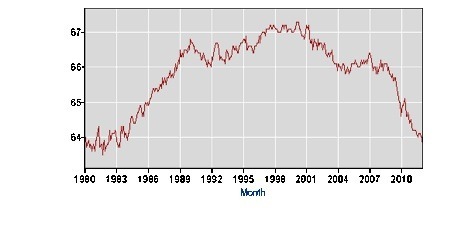
Bureau of Labor Statistics labor-force-participation rate since 1980.
During the eight years of the Bush administration, the participation rate fell by 1.5 per cent, from 67.2 per cent to 65.7 per cent; the population-to-employment ratio fell by a whopping 3.8 per cent, from 64.4 per cent to 60.6 per cent, most of which was concentrated in the recession year of 2008. In the ensuing three years, the participation rate has dropped another two per cent, and the employment-to-population ratio has dropped another 3.4 per cent.
The over-all picture, then, is of a labor market that is picking up but still operating at a much lower level of intensity than it did ten or fifteen years ago. Much of the shortfall is a lingering effect of the recession. But given that the participation rate and the employment-to-population ratio have been falling for more a decade, at least part of the change may well represent a permanent development caused by the aging of the baby boomers. Just how much, we won't know until we've had a few more years of decent growth.
That doesn't make a handy political slogan. But it's about all we can say for sure.
Photograph of career fair in midtown Manhattan by Spencer Platt/Getty Images.
February 4, 2012
Romney Wins Handily in Nevada, But Newt Ain't Quitting
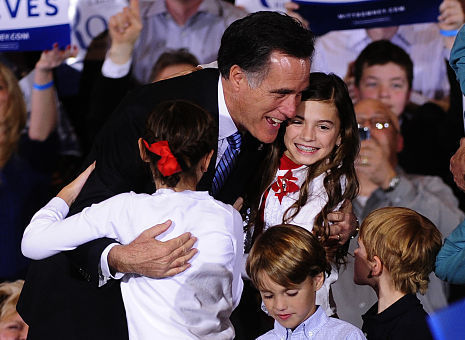
In a town where the Church of Jesus Christ of Latter-day Saints has had a big presence since the days of the Mormon Trail, Mitt Romney staged something of a homecoming on Saturday night. Appearing before hundreds of cheering supporters in a packed ballroom at the Red Rock casino resort, a few miles west of the Las Vegas strip, he thanked Nevada Republicans for supporting him for a second time in four years, adding, “This time, I'm going to take it to the White House."
Coming four days after his big victory in Florida, and ahead of six more contests this month that he looks likely to win, the Nevada result confirmed Romney's status as the heavy favorite to gain the Republican nomination. As he did on Tuesday in Tampa, he devoted most of his victory speech to attacking Barack Obama, whom he said owed the American people an apology for failing to deliver on his promises.
Acknowledging Friday's job figures, which showed unemployment falling to 8.3 per cent, Romney said the official jobless rate had now been above eight per cent for thirty-six months, and he claimed that the "real" rate was still above fifteen per cent. (Presumably, he was here including discouraged workers who have dropped out of the work force and people working part time for economic reasons. Counting them, the rate of "underemployment," to give it its usual name, is 15.1 per cent.)
Having spent a lot of time and money in Nevada, where roughly a quarter of the caucus-goers were Mormons, according to an entrance poll, Romney was operating on quasi-home ground. Still, the scale and breadth of his success was pretty impressive. At 8:30 A.M. E.T. on Sunday morning, with seventy-one per cent of the caucus votes in, Romney was leading Newt Gingrich by forty-eight per cent to twenty-three per cent. Ron Paul was in third place with eighteen per cent of the vote; Rick Santorum was in fourth place with eleven per cent.
But if the Mittster had been hoping that his big victory would prompt his closest rival to drop out, he was disappointed. In a press conference shortly after Romney's speech, a defiant Newt pledged to continue all the way to the convention in Tampa. Looking very relaxed for somebody who had just lost heavily for the second time in a week, he lambasted the front-runner with merry abandon, describing him as a "George Soros approved candidate."
Just as in Florida, Romney led the vote in all income groups, education levels, and religions. According to the entrance poll, he got ninety per cent of the Mormon vote, fifty-two per cent of the Catholic vote, and forty-three per cent of the evangelical Christian vote. Belying the idea that right-wing Republicans won't vote for him, he outpolled Gingrich by more than two to one among voters who described themselves as conservatives, and by a similar margin among voters who said they supported the Tea Party.
Once again, Romney's perceived electability was his biggest asset. Forty-four per cent of voters said the ability to defeat President Obama was the most important attribute in a candidate, and of these people three in four voted for Mitt. Still, the result wasn't without some worrying signs for Romney and the Republicans. Despite all the money and time he invested in the state, the winner failed to match the fifty-one per cent of the vote that he achieved in 2008. In that race, there were five candidates; this time there were just four. Moreover, voter turnout was well down from 2008. In some counties, the fall-off was as much as twenty five percent, which hardly indicates a rush of enthusiasm for this year's candidates.
Lastly, there is Newt. Clearly relishing his return to attack-dog status, he pointed out in his press conference that he had performed better than John McCain did in 2008—and this despite having no television ads and virtually no local organization. Looking more like the Gingrich of South Carolina than the lame impersonator we saw in Florida, he jovially dismissed rumors that he might quit, which he insisted had emanated from the Romney campaign. "I'm not going to withdraw," he said. "I'm actually pretty happy with where we are."
Predicting that he would draw level, or close to level, with Romney by the Texas primary, which takes place in early April, he continued to insist that conservatives across the country would refuse to accept "a Massachusetts moderate," who was "pro-abortion, pro-gun control, pro-tax increases." Asked why his performance in the Florida debates had been so lackluster, he said he had been stunned at the attacks upon him by Romney and his supporters, averring, "I had never seen anything so blatantly dishonest."
Coming from somebody who had just been walloped in two important states, it was either a bravura performance or a monumental display of self-delusion, or possibly both. And from the perspective of the Romney campaign, it had an ominous ring to it. Said CNN's David Gergen after Gingrich left the stage: "I can't remember a candidate who was so ambitious for national office but also who was so driven by personal hatred."
The result may no longer be in much doubt, but this thing appears to be far from over.
Photograph by Emmanuel Dunand/AFP/Getty
February 3, 2012
Jobs Report Makes it a "Super Friday" for Obama
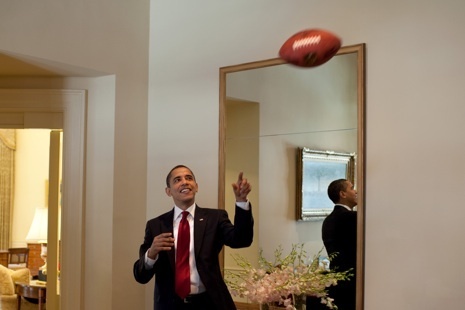
If you think you heard a loud cheer around 8:30 E.T. this morning, you were right. It came from 1600 Pennsylvania Avenue, where Super Bowl weekend started early—at just about the moment when the Labor Department announced that the unemployment rate fell to 8.3 per cent in January.
Of course, once they had almost busted their lungs screaming "touchdown," the President's men tried to put a sober face on things. "Today's employment report provides further evidence that the economy is continuing to heal from the worst economic downturn since the Great Depression," Alan Krueger, the chairman of the Council of Economic Advisors, said in a blog post that was carefully modulated to avoid the appearance of gloating. "It is critical that we continue the economic policies that are helping us to dig our way out of the deep hole that was caused by the recession that began at the end of 2007."
C'mon, Alan! Loosen up a bit. Everybody knows that the unemployment rate will be the biggest determinant of the election, and it's now down to its March, 2009, level. If January's rate of hiring continues—the economy added two hundred and forty-three thousand jobs—then within a few months the jobless rate will drop below 7.8 per cent, which is where it stood when Obama took office.
At that point, it will be tough for Mitt Romney to stand up and say the President's policies have made the recession worse. And it will be impossible for Republicans to deny that things are getting better. Actually, some of them have already dropped that pretense. In a statement this morning, John Boehner, the Speaker of the House, said the jobs report was "welcome news" before adding, "We need to do better."
That is certainly true, but is it a big enough indictment to turf out a first-term President, something Americans have historically been very reluctant to do? I doubt it, and so do many other people. On Intrade, the political betting market, the implied probability of Obama winning in November jumped by more than two per cent this morning. It now stands at about fifty-seven per cent.
As I said last month, when the unemployment rate fell from 8.6 per cent to 8.5 per cent, the improvement in the labor market presents a particular dilemma to Romney, who has based much of his campaign on the idea that he is the one to get America back to work. Only yesterday, in his appearance with Donald Trump, he said, "I want to do everything in my power to get this economy going again."
Earth to Mitt: Have you been reading the recent jobs reports?
This one showed that private-sector employers created two hundred and fifty-seven thousand jobs in January, and that hiring picked up across many sectors of the economy: manufacturing, construction, leisure and hospitality, health care, and business services. About the only sectors not hiring were the financial industry and the government: public-sector employment fell by fourteen thousand in January.
A couple of months ago, when the Labor Department announced that the unemployment rate had fallen from 9.0 per cent to 8.6 per cent in November, I noted that a single month's job figures shouldn't be taken too seriously. But we have now had three strong reports in a row—a sure signal that the economy is strengthening. And this month's report actually revised up the job figures from previous months. According to the latest figures from the Labor Department, employers created a hundred and fifty-seven thousand jobs in November and two hundred and three thousand in December.
You don't have to know much about economics or statistics to see things are picking up: a hundred and fifty-seven thousand, two hundred and three thousand, two hundred and forty-three thousand—that series of figures is increasing. And other statistics confirm the positive picture. The Commerce Department reported today that factory orders rose again in December. For 2011 as a whole, they jumped by more than twelve per cent as automakers and other manufacturers had a banner year. Outside of finance and residential real estate, most sectors of the economy have seen a meaningful rebound in business since the recession officially ended, in June, 2009.
Is everything hunky dory? Of course it isn't. About 12.7 million Americans are still out of work, and 5.5 million of them have been jobless for more than six months. Some groups still have very high unemployment rates: teen-agers—23.2 per cent; blacks—13.6 per cent; Hispanics—10.5 per cent. And if you add in people who say they want a job but have stopped looking and those working part time for economic reasons, the overall rate of "under-employment" is still 15.1 percent.
But that figure is ticking down, too.
On Wall Street, the traders have a saying: the trend is your friend. The same thing applies to politics. As I noted in December, "The U.S. economy appears to be heading in the right direction. Which for President Obama and his Republican rivals is potentially very big news." Two months on, the only change I would make to that statement is to take out "potentially."
Official White House Photo by Pete Souza.
February 2, 2012
Trump Endorsement: Mitt's Lesson in Media Management
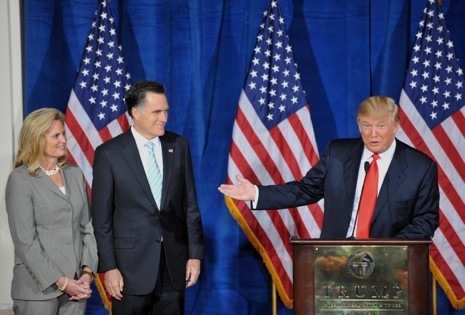
A day after telling CNN he wasn't concerned about the poor or the very rich, Mitt Romney spent Thursday relentlessly focussing on the problems of middle-class families in Nevada that have been hit by rising unemployment and a whopping property bust.
Not quite.
Around lunchtime, Romney and his wife, Ann, headed over to the Trump International Hotel Las Vegas, a six-hundred-and-forty-five-foot tower, which, even in a town built on ostentation, is famous for its gaudiness. According to what the Donald says—and we all know how reliable that is—each one of its floor-to-ceiling windows is plated in twenty-four-carat gold. The hotel also features an eleven-thousand-square-foot spa, fifty penthouse suites that start at six hundred dollars a night, and a fancy restaurant bearing Trump's initials.
Having spent the past year crisscrossing the country, the Romneys, who have been married for forty-two years, surely deserve a getaway break. Sad to report that they weren't going to take advantage of the Trump International's Bubbles & Bliss February special, which invites its patrons to "celebrate the month of romance with an in-suite couples' massage and bath therapy, chilled champagne, chocolate-dipped strawberries, and a Kama Sutra getaway gift." (Packages start at $489.) Nor were the Romneys going to inquire about buying a condo in the part of the building devoted to full-time residences, although the proprietor would certainly have been happy to show them one. (Prices range from under two hundred thousand for a studio to $2.5 million for a three-bedroom apartment with four baths.)
Buoyed by a poll in the Las Vegas Review-Journal that shows Mitt leading Newt by twenty points two days ahead of Saturday's caucus, the Romneys were going to attend what MSNBC's Martin Bashir, with admirable British understatement, described as "the most significant moment of the twenty-first century." Cable anchormen and political reporters love to whine about Trump and the "circus" atmosphere he creates with his repeated interventions in the serious business of electing a President, but that doesn't stop them from showing his press conferences live, or, in the case of the Guardian, live-blogging the event beginning more than two hours before it starts.
Having spent more than thirty years hyping his own persona, Trump knows the news business better than most of its employees. He teed up this non-event by acting coy about whom exactly he would be endorsing. Was it going to be Newt, whom he greeted warmly at Trump Tower as recently as December? Or Mitt, who pointedly refused to attend the Newsmax debate that Trump was slated to moderate?
Anybody who thought that it might be Newt doesn't know the author of "The Art of the Deal": he doesn't back losers. In a typically tasteful touch, Trump had adorned the stage with not one American flag but four. Confirming the old newsroom adage that nobody can beat him in the ten-yard dash to the nearest microphone, he spoke first. The Romneys stood stiffly to the side, looking rather like a couple of devout Mormons who'd gotten off on the wrong floor and found themselves at a swingers' club.
For a minute or so, Trump sounded like he was auditioning for a spot on Romney's economic team—or possibly running himself. Rubbishing the White House's claims that things were getting better, he said he had it on good authority from the non-partisan Congressional Budget Office that by next January the unemployment rate would be back to nine per cent. (Actually, the C.B.O.'s new—and markedly pessimistic—forecast is for an unemployment rate of 8.9 per cent in the fourth quarter of 2012, but Trump's figure wasn't far off.)
I was beginning to think that Trump might have changed his mind and decided to launch his own third-party election bid after all, when a light went on in his head, and he remembered why he was there. "It's my honor," he said, "a real honor—to endorse Mitt Romney." After the Romney supporters in the room stopped cheering, Trump went on: "He's tough, he's smart, he's sharp. He's not going to allow bad things to continue to happen to this country that we all love. So, Governor Romney, go out and get 'em. You can do it."
That ringing endorsement brought a genuine smile to Romney's face. Trump even shook his hand without putting on a glove first, something he generally avoids, being a notorious germaphobe. Stepping up to the microphone, Romney still seemed a bit embarrassed to be there: "There are some things that you just can't imagine happening in your life," he said. "This is one of them." Then, realizing he should probably say something positive about Trump, he described his host as someone who creates jobs and hires people—evidently, he doesn't watch "The Apprentice," which, not entirely coincidentally, is due to start a new season in a couple of weeks—and somebody who isn't afraid to say that China is cheating.
That got Mitt going on his standard stump speech, and he delivered a few lines about the country needing a president who stands up to cheaters, Obama being "in way over his head," and so on. He also mentioned the foreclosure crisis and the fact he was seeking the endorsement of people who actually live in Nevada.
By then, though, it was too late. As so often before, Trump had dictated the story line and the headlines for this news cycle. Mitt's campaign to save the middle class would have to wait for another day.
Photography by Stan Honda/AFP/Getty Images.
January 31, 2012
The New Mitt: Tougher, Shinier, with a Hint of Nixon
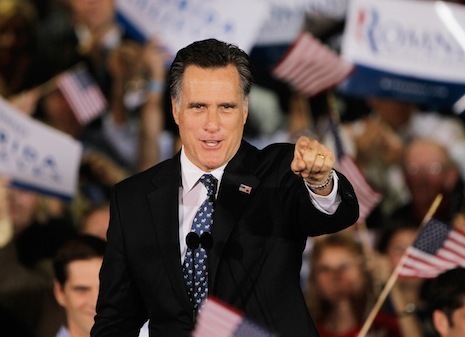
At 8:30 P.M. E.T. last night, barely half an hour after some polling stations in the Florida Panhandle had closed, a new, voter-friendly Romney took the stage in Tampa before a large, cheering crowd. Looking far more relaxed than the stuffed shirt we have seen on the campaign trail for the past few months, this Romney smiled in a way that appeared unforced, joked about how the five sons in the family "keep us humble," and generally came across as a warm and genuine human being.
Unfortunately for all you folks hoping to make Barack Obama a one-term President, this was Ann Romney speaking, not Mitt. When the candidate arrived at the dais, newly restored to his title of "Mr. Inevitable," he looked as stiff and wooden as ever, raising his left arm in a victory salute that evoked memories of Richard Nixon—which is not exactly what you want to do when you are trying to persuade people you are the man "to restore to America the values that made us the hope of the earth."
That was one of the punch lines in Mitt's speech, which had clearly been worked on a lot harder than his victory speech in Iowa (which turned out to be a second-place speech). That night, four long weeks ago, Romney dumped his teleprompter and simply regurgitated the same words he had used on the stump earlier in the day. He clearly thought he could cruise to the nomination. After Newt Gingrich tossed that plan into Charleston Harbor, he did what had to be done. In the lingo of the campaign consultants, he "went negative," displaying a combative side that augurs well for the battle ahead and reducing Newt to the same whining baby who, many moons ago (there, I got in my lunar reference), complained about being seated in the back of Bill Clinton's Air Force One.
The strategy worked to perfection, and it yielded an impressive victory. In the fourth largest state in the country, Romney won forty-six per cent of the vote, defeating his closest rival by fourteen points, and, according to exit polling, finishing ahead in all major income and age groups. The only segments of the Republican electorate that didn't make him their first choice were arch-conservatives and strong supporters of the Tea Party, and even in these groups he only trailed Gingrich by a few points.
In a particularly encouraging sign for the general election, Romney did very well with women and Hispanics—two groups that Barack Obama will be relying on to win reëlection. Among male voters, Gingrich ran him close: thirty-six per cent to forty-one per cent. But among women, Romney won easily: fifty-one per cent to twenty-nine per cent. The Hispanic contest was a no-contest: Romney defeated Gingrich by twenty-five points. In 2008, he gained just fourteen per cent of the Hispanic vote. This time, he got fifty-three per cent.
With the debacle of South Carolina safely behind them, Romney's strategists used his victory speech to relaunch their candidate on the national stage, showcasing what they hope will be a more attractive and crash-resistant version. During the next couple of weeks, we will see how voters in other states—Colorado, Maine, Minnesota, Missouri, Nevada—react to this marketing campaign. The early reviews were positive, even from some Democrats. Appearing on CNN before Romney spoke, Paul Begala said he should ignore Newt and focus on Obama, demonstrating to the Republican Party that he could defeat the President. "He did a very good job," Begala said when Romney had finished.
Alex Castellanos, the Republican strategist, was even more positive. "He did something I haven't seen him do before," Castellanos, who worked for Romney in 2008, said. "He reached out to the audience." That may be stretching things a bit. What Romney actually did was ask his audience "to remember how special it is to be an American." And he went on:
I want you to remember what it was like to be hopeful and excited about the future, not to dread each new headline.
I want you to remember when you spent more time dreaming about where to send your kids to college than wondering how to make it to the next paycheck.
I want you to remember when you weren't afraid to look at your retirement savings or the price at the pump.
I want you to remember when our White House reflected the best of who we are, not the worst of what Europe has become.
That America is still out there. We still believe in that America.
We still believe in the America that is a land of opportunity and a beacon of freedom. We believe in the America that challenges each of us to be better and bigger than ourselves.
This election, let's fight for the America we love. We believe in America.
Listening to this litany of platitudes, I was put in mind, for the second time, of Richard Nixon. In 1968 and in 1972, Tricky Dick effectively ran on a platform of defending Norman Rockwell's America from assault by hippies, peaceniks, and Black Panthers. Spouting the same sort of nativist pablum that Romney used last night, he tied Hubert Humphrey and George McGovern to dopers, agitators, and proponents of free love.
Actually, Romney is taking the Nixon strategy a step further. In his telling, the enemy of the real (read white, suburban, Christian) America isn't the latter-day descendants of Abbie Hoffman, or Jerry Rubin, or Huey Newton, but Barack Obama himself—a Barack Obama who "wants to grow government and continue to amass trillion-dollar deficits"; a Barack Obama who "demonizes and denigrates almost every sector of our economy"; a Barack Obama who "orders religious organizations to violate their conscience"; a Barack Obama who "has adopted a strategy of appeasement and apology."
Watching Romney mouthing these attack lines, his strategy for this fall was patently clear. Embarrassingly short of his own distinctive policy proposals, he intends to make the election a referendum on Obama. Not the real Obama—the equivocating, eager-to-compromise moderate who has been inhabiting the White House for the past three years—but the crypto-socialist America-basher who lives in the minds of some Republican voters.
Unfortunately for Romney, Obama's campaign team is planning to follow exactly the same strategy in reverse. They, of course, will be trying to turn the election into a referendum on Mitt. Not the all-American family man we saw last night, but the job-destroying, tax-evading, Swiss bank account using, Bain Capital Mitt that Gingrich was busy telling us about until he lost the plot somewhere between Columbia, S.C., and St. Petersburg.
In short, we face the prospect of a Presidential campaign featuring two candidates who will be eager to discuss anything but their own records. It isn't going to be an elevating nine months. But it is surely going to be a closely and bitterly contested one.
Photo by Joe Raedle/Getty Images.
John Cassidy's Blog
- John Cassidy's profile
- 56 followers



